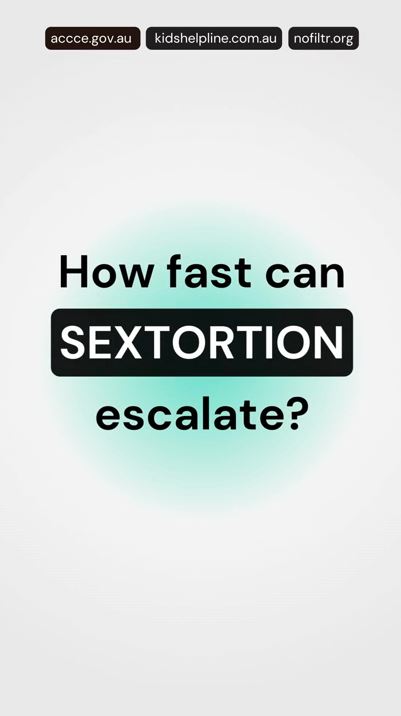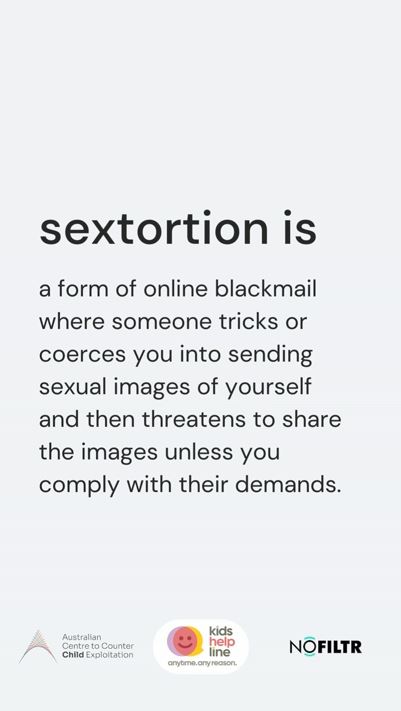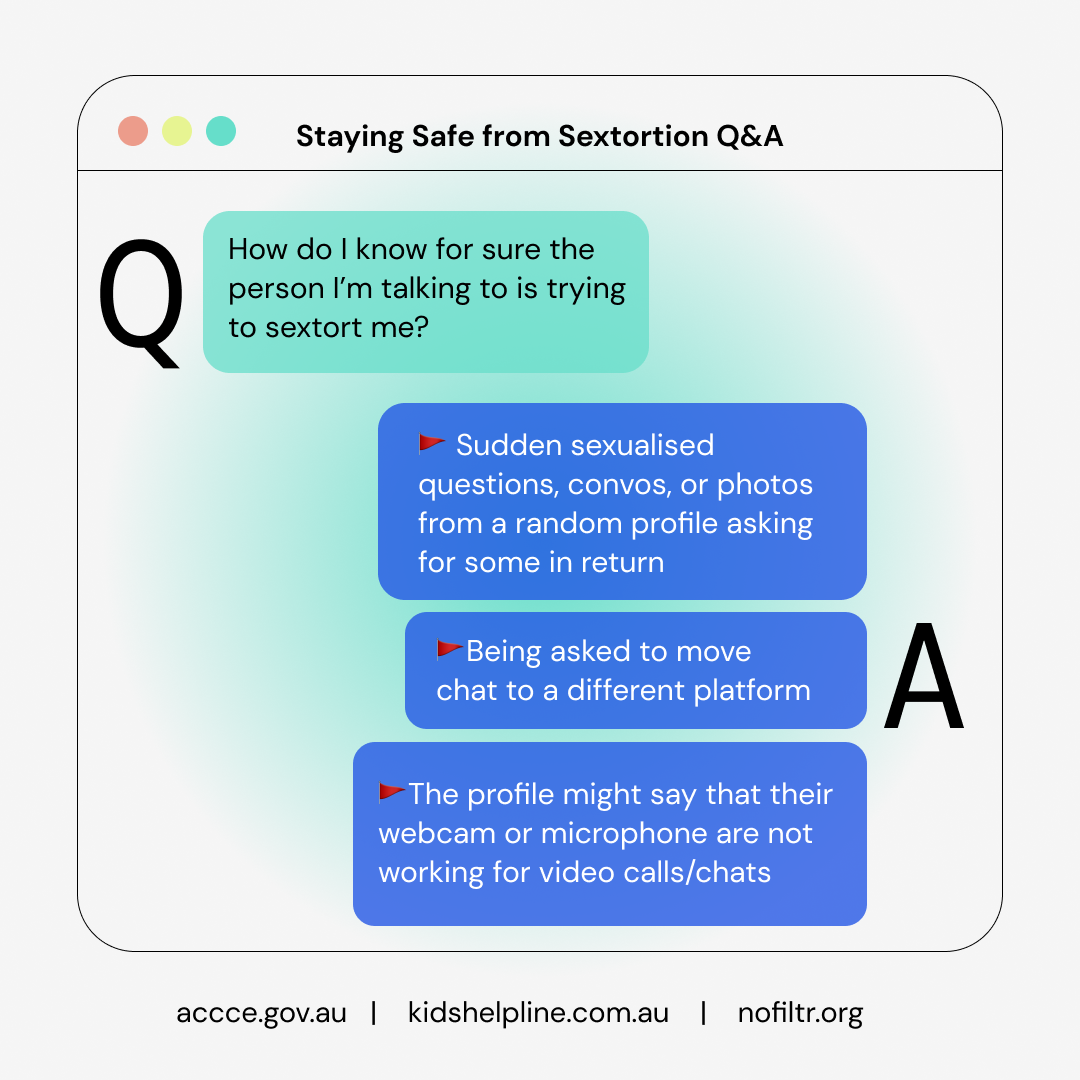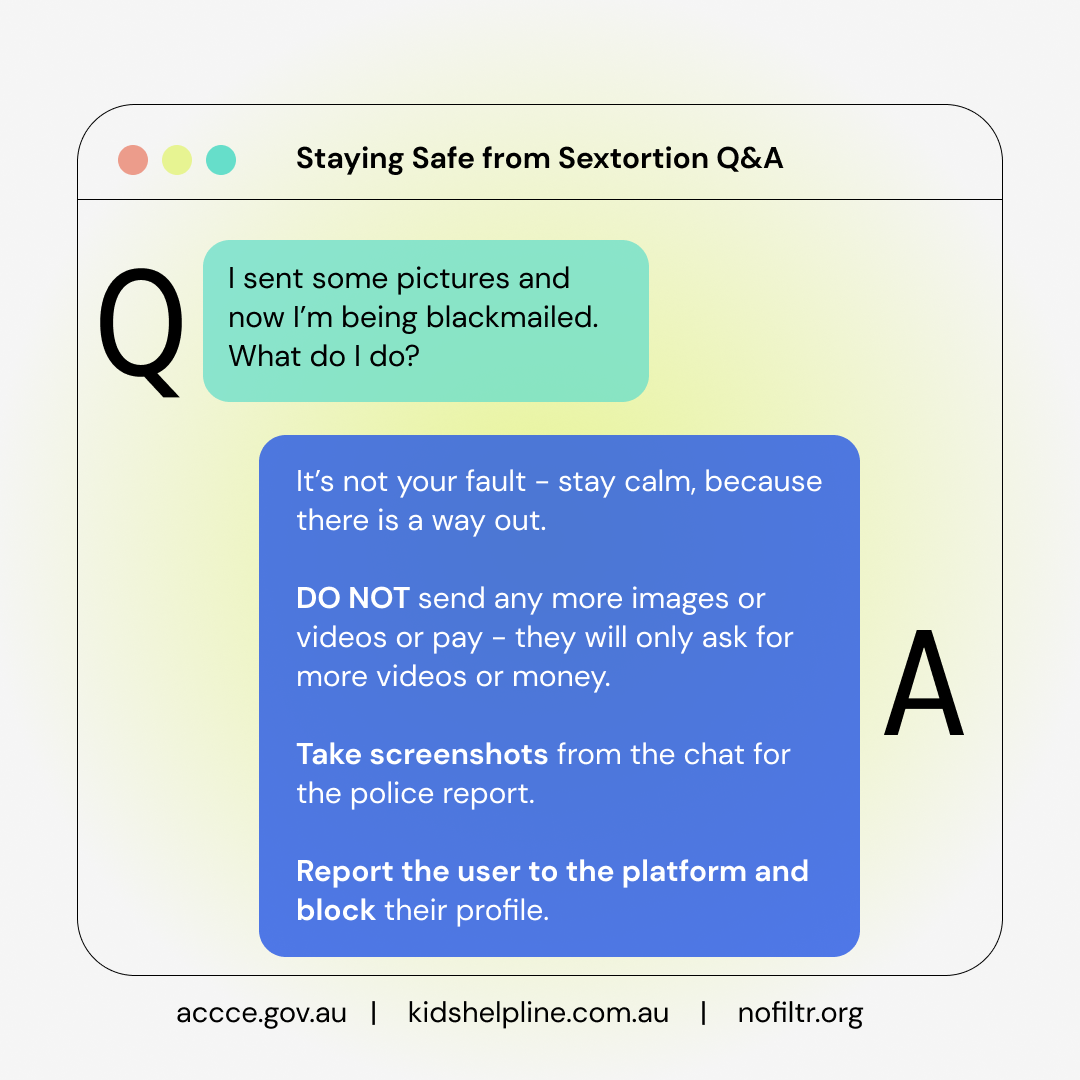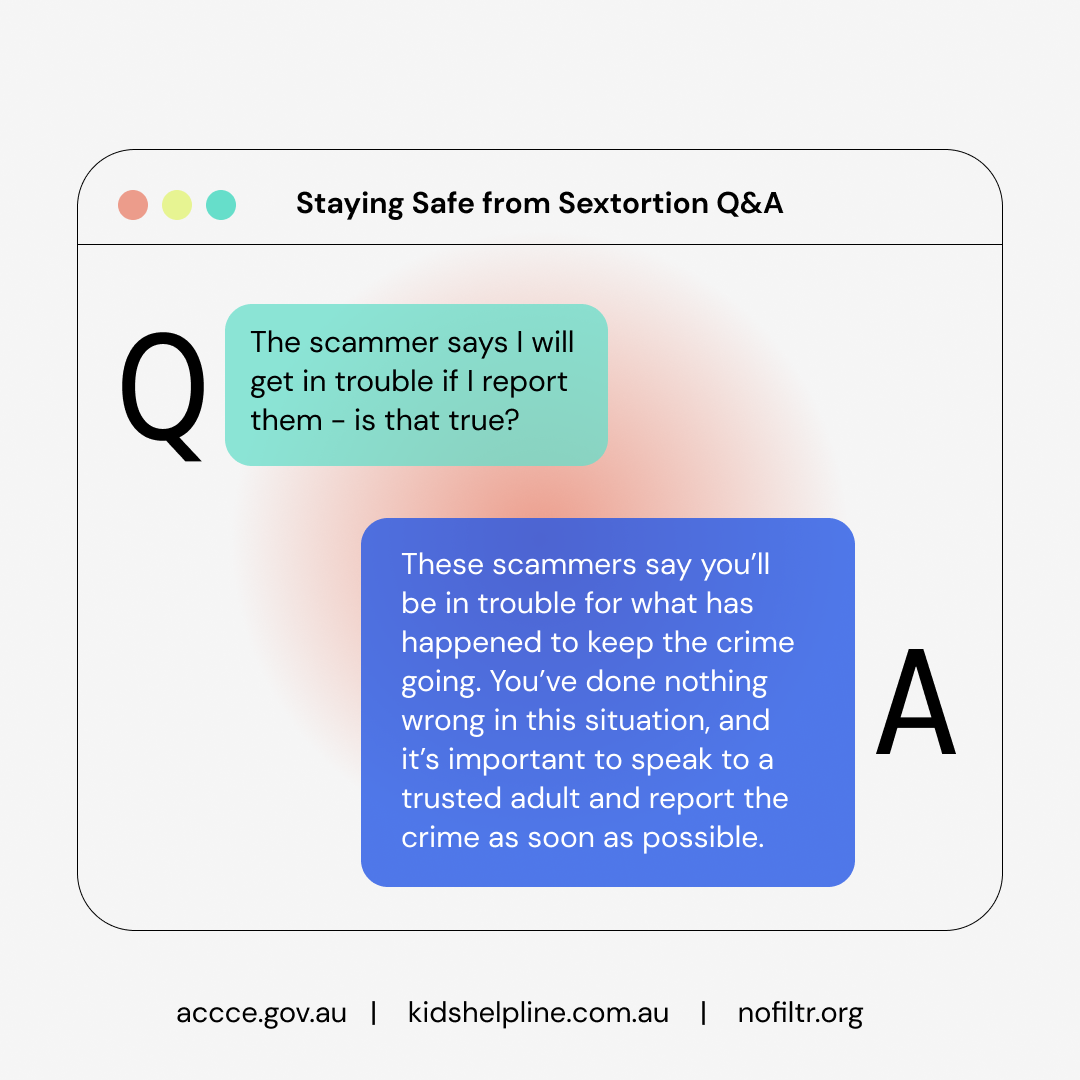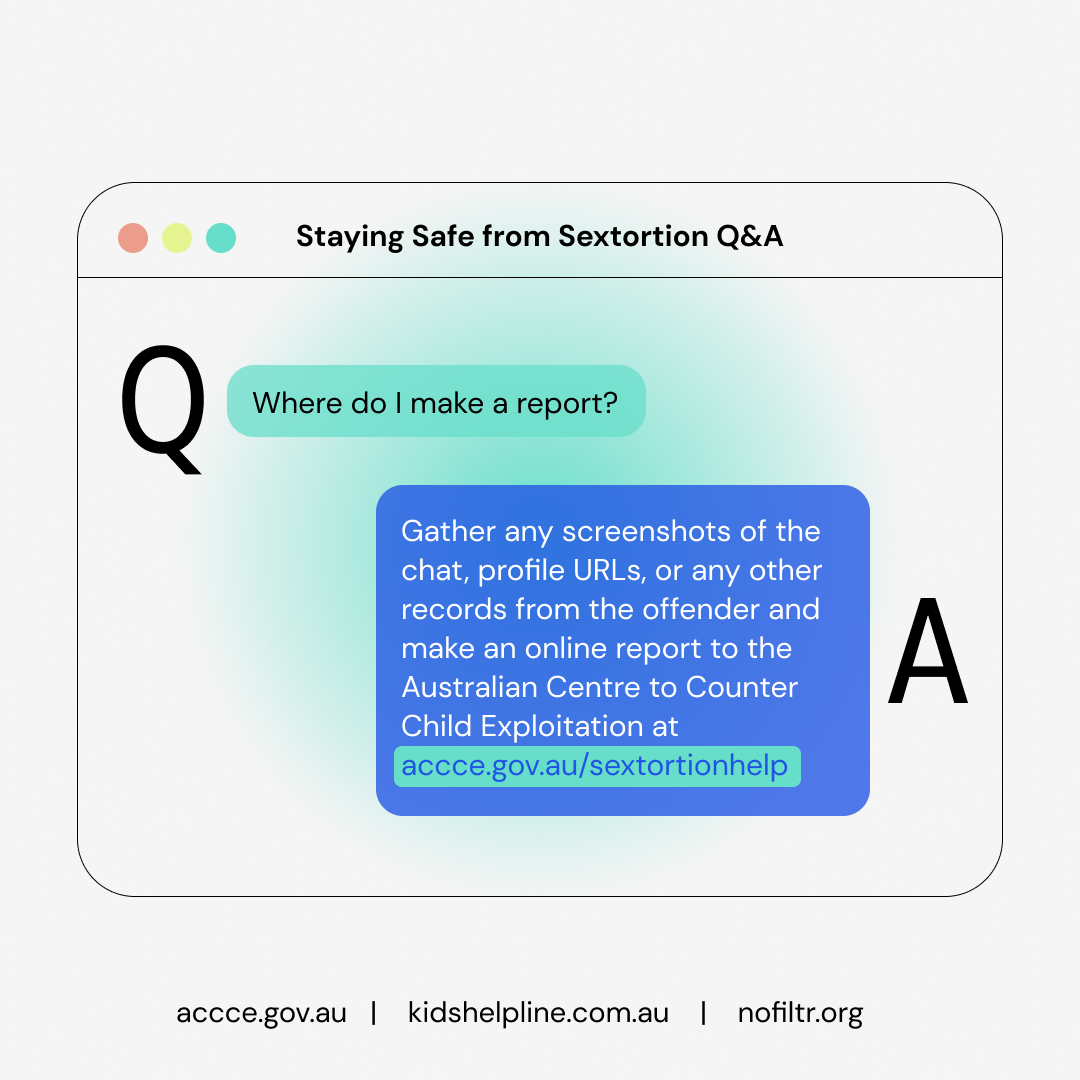What is it?
Sexual extortion, also known as sextortion, is a form of online blackmail where someone tricks or coerces you into sending sexual images of yourself and then threatens to share the images unless you comply with their demands. Usually, these demands are for more images, payment or sexual favours.
Offenders may even attempt to capture sexual images of a young person while they are on live stream or video, sometimes without their knowledge. This is also known as ‘capping’.
Offenders are manipulative in making you feel there is no way out of the situation, including threatening to share your content online with family, friends and acquaintances.
Fear, coercion and manipulation keep the crime going. In addition to the threats and coercion, victims often feel like they have done something wrong and will be punished by parents or carers or prosecuted by police if their actions are discovered.
Right now, Australia is experiencing a global trend of offenders predominantly targeting teenage boys to send sexual images and threatening to share them unless they pay.
Read the latest media release here.
If this has happened to you, our specialist investigators will make sure you get the help you need.
How does it happen?
Sextortion can happen on any interactive service, including image and video sharing, instant messaging or social media apps.
Most commonly, you are tricked into sending sexual images and videos of yourself to someone online.
If sexual images and videos depict someone under the age of 18 years, this is considered child abuse material.
Once offenders have this child abuse material, it is then used to blackmail a victim with threats to share the image with their friends or family, unless they comply with demands. These demands are typically for further images, gaming credits, gift cards or even money.
Offenders are able to gain access to your contact list on social media through public social media accounts or by following or befriending you on these platforms.
Based on our current intelligence, if it’s happening to you, the offender is likely to be also targeting those on your friends list.
What should you do?
Our specialist investigators will make sure you get the help you need.
Offenders might make you feel embarrassed or ashamed and say you will get into trouble for sharing sexual content, to discourage you from reporting the crime.
It is important to know you will not be in trouble with law enforcement. You can make it stop.
![[tick] Do stop the chat [tick] Do take screenshots of the text messages and the offender’s profile. [tick] Do block the account and report it to the platform. [tick] Do report the offence to the ACCCE, via the red “report abuse” button. [tick] Do get support to manage the situation. You are not alone.](https://www.accce.gov.au/sites/default/files/featured_images/2022-11/sextortion%20website%20page%20page%20do.png)
What NOT to do
![[cross] Don’t send more images to the offender. [cross] Don’t pay. Once you pay the first time, they will ask you to pay again. [cross] Don’t respond to their demands. [cross] Don’t enter into any further communication with the offender. [cross] Don’t think you are alone.](https://www.accce.gov.au/sites/default/files/featured_images/2022-11/sextortion%20website%20page%20page%20donot.png)
What to look out for
When talking to new people online you should be wary of:
🚩 Unsolicited friend or follow requests or random adds from people you don’t know.
🚩 Sudden sexualised questions or conversation.
🚩 Instantly receiving sexual images from a fake profile who asks for the same from you.
🚩 Getting a direct message on one app, then being asked to continue chatting on a different app.
🚩 Signs that English may be a second language.
🚩 The fake profile might say that their webcam or microphone are not working for video calls/chats.
🚩 The fake profile says that they promise to delete your content.
Do you need help?
If you are under the age of 18 and this has happened to you (or another young person you know), you are a victim of online child sexual abuse. We can help.
- What happens after I report it to the ACCCE?
- How to get support
- How can I protect myself?
- The AFP-led ThinkUKnow program has developed a guide to help young people recognise and respond to sexual extortion. Download it here.
- How can I have these images removed?
- If your naked or sexual images have been shared without your consent, eSafety can help to quickly remove these images. For advice and help to get images removed: esafety.gov.au/report
Community resources
Help us raise awareness about sextortion and how to get help.
Victims can suffer serious psychological impacts and there have been instances of suicide and self-harm directly linked to victims of this crime. We are urging parents, carers and educators to have important safety conversations to help prevent young people from harm.
The following material can be downloaded for your school, organisation or workplace.



